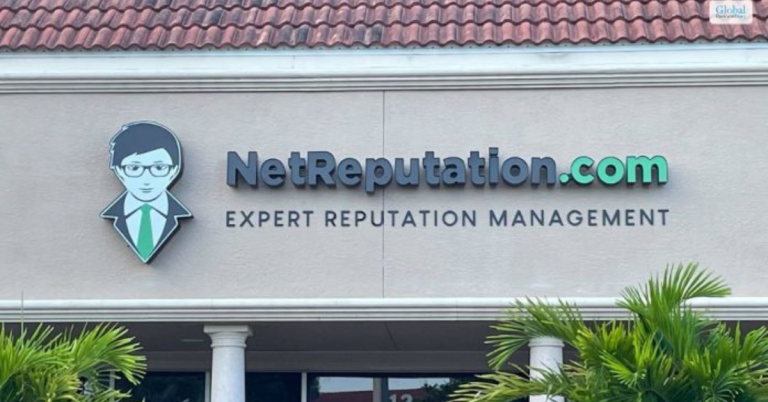BaaS or DRaaS? How to Choose the Right Data Protection Strategy for Your Business

Choosing the right data protection strategy is crucial for any business aiming to safeguard its critical information and ensure operational continuity. With the increasing importance of data in driving business success, two critical solutions stand out: Backup as a Service (BaaS) and Disaster Recovery as a Service (DRaaS). While both offer essential protection, they serve different purposes.
BaaS provides a focused approach by regularly backing up data to a secure location, ensuring you can restore essential files quickly in case of loss. On the other hand, DRaaS offers a more comprehensive solution by replicating entire IT systems and enabling rapid recovery, which helps maintain business operations during significant disruptions. Deciding between BaaS and DRaaS involves understanding your business’s specific needs, such as data volume, recovery speed, and budget. Engage with Managed IT Services Nashville to choose the right services to protect your business data from potential threats.
In this blog, we will discuss the key differences between BaaS and DRaaS, helping you to choose the right data protection strategy for your business.
What is BaaS?
Backup as a Service (BaaS) is a cloud-based solution that allows businesses to securely back up their data and ensure its recovery in case of loss or corruption. BaaS involves automatically storing copies of critical data at regular intervals in a remote, secure cloud environment. This service simplifies data protection by eliminating the need for on-premises backup infrastructure and management, and it offers easy access to backups from any location.
What is DRaaS?
Disaster Recovery as a Service (DRaaS) is a comprehensive cloud-based solution that ensures business continuity by replicating and safeguarding an organization’s IT infrastructure. DRaaS provides a complete disaster recovery plan, replicating servers, applications, and data to a secure cloud environment. In a disaster, DRaaS enables rapid failover to the replicated systems, allowing businesses to resume operations with minimal downtime.
8 Differences Between BaaS and DRaaS
1. Primary Focus
One of the main differences between BaaS and DRaaS lies in their primary focus. BaaS primarily focuses on backing up data and ensuring its availability for recovery in case of accidental deletion, corruption, or other data loss scenarios.
On the other hand, DRaaS emphasizes providing comprehensive disaster recovery solutions that include data backup, system failover, and continuity strategies to minimize downtime during a disaster. Understanding this distinction is crucial for businesses looking to implement the most suitable data protection and recovery solution based on their specific needs and priorities.
2. Scope of Protection
BaaS focuses on creating and storing regular backups of critical files and databases to protect data. It ensures that your data is copied to a secure cloud environment for restoration in case of data loss or corruption. However, BaaS only deals with recovering individual data components and does not address the recovery of entire systems.
DRaaS provides a broader scope of protection by replicating entire IT environments, including servers, applications, and data. This approach ensures the security of data and the full range of IT systems and infrastructure. If a disaster occurs, DRaaS enables rapid failover to these replicated systems, ensuring business continuity and minimizing downtime.
3. Data Recovery
BaaS specializes in recovering individual data files and databases by creating periodic backups of critical data that can be restored. Recovery time with BaaS depends on the size of the backup and the efficiency of the restore process, varying based on the volume of data and the complexity of the backup system. While BaaS ensures the retrievability of your data, it does not cover the recovery of entire systems or applications.
On the other hand, DRaaS replicates your entire IT infrastructure to a secure cloud environment, allowing for rapid failover in a disaster. This means that, in addition to data, all crucial components of your IT environment can be quickly restored, minimizing downtime and ensuring that business operations can continue with minimal disruption.
4. Failover Capabilities
BaaS (Backup as a Service) mainly focuses on backing up data and applications to ensure they can be restored in case of data loss or corruption. While some BaaS solutions may offer limited failover options, their primary function is data protection rather than rapid recovery.
On the other hand, DRaaS (Disaster Recovery as a Service) is specifically designed to provide failover support during a disaster or system failure. DRaaS solutions often include automated failover processes that allow for quick and seamless recovery of IT systems, minimizing downtime and ensuring business continuity.
5. Recovery Time Objectives (RTO)
BaaS typically has a longer RTO than DRaaS. The RTO with BaaS is influenced by the time required to restore data from backups, which can be affected by factors such as the backup’s size and the network’s speed. As BaaS focuses solely on data recovery, restoring access to large volumes of data may take time, potentially leading to extended downtime for business operations.
On the other hand, DRaaS offers a much shorter RTO due to its comprehensive approach. DRaaS includes system replication and failover capabilities, allowing rapid switch-over to replicated systems in a disaster. This results in minimal downtime and swift resumption of business operations.
6. Recovery Point Objectives (RPO)
BaaS focuses on regular data backups to minimize data loss, with Recovery Point Objectives (RPOs) typically aligned with the backup frequency. For example, if backups are performed every 24 hours, the RPO is 24 hours, meaning data restoration can only be brought back to the state it was in up to 24 hours before the last backup.
DRaaS emphasizes near-real-time data replication to minimize downtime and data loss during significant disruptions. The RPO with DRaaS is usually much lower than with BaaS, often ranging from minutes to seconds, aiming to preserve data as close to the most recent state possible before a disaster.
7. Compliance and Regulations
When considering BaaS, it is vital to ensure that the service provider complies with industry-specific data storage, access, and security regulations. This is particularly crucial for businesses handling sensitive information or subject to regulatory requirements.
On the other hand, DRaaS focuses on ensuring business continuity during a disaster, emphasizing quick recovery times and minimal data loss. Compliance considerations for DRaaS typically involve creating and testing disaster recovery plans that meet regulatory standards to ensure seamless operations during unforeseen disruptions.
8. System Replication
Backup as a Service (BaaS) involves periodic system data backups at scheduled intervals, such as daily or weekly. Only the data up to the last backup point can be restored. BaaS does not include real-time replication of the entire system state.
Disaster Recovery as a Service (DRaaS) focuses on continuous or near-continuous system replication. This ensures that an up-to-date copy of the entire system is always available. With DRaaS, immediate recovery of data and system configurations is possible, enabling swift restoration of operations with minimal disruption.
Conclusion
The choice between BaaS and DRaaS depends on your business’s specific needs. BaaS is best for regular data backups and recovery, focusing on individual files and databases, with periodic backups to ensure data protection but not full system recovery. On the other hand, DRaaS provides continuous system replication and rapid failover, offering a comprehensive solution for businesses that require minimal downtime and robust protection during significant disruptions. Understanding these differences will help you choose the right strategy to meet your operational requirements and risk management goals. For more information, contact IT Support Detroit professionals.





